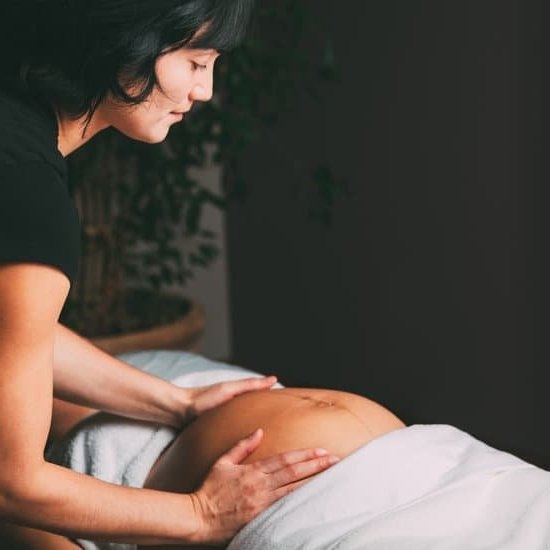Introduction
Pregnancy back pain is one of the most common problems women face during their pregnancy. With escalating levels of hormones, weight gain and changing sleep positions, every trimester will bring an increase in evaluation and management of back pain. To minimize the effects of pregnancy back pain, there are a variety of things that can help reduce discomfort, manage stress and limit physical activities that may worsen the pain.
p1 Ways to Alleviate Pregnancy Back Pain:
Exploring various options can be effective for reducing the strain on your back while pregnant. There are numerous safe strategies to assist with alleviating pregnancy back pain, including regular exercise and stretching to strengthen core abdominal muscles and improve posture, wearing flat or low-heeled shoes when you’re out and about to lower the pressure on areas such as your spine, hips, and feet; use a heat pad or take warm baths for relief after a long day or following a strenuous workout; wear supportive abdominal supports or braces during vigorous activities or nightwear to provide extra support; lastly develop healthy sleeping habits by repositioning pillows to support different areas that need it throughout the night.
P2 Taking Care of Yourself:
Take it easy during your pregnancy. While staying active is beneficial for your baby’s health and development, it is essential to avoid any activities that require intense motion like running, contact sports or weightlifting until after delivery. Low-heat exercises like swimming have proven beneficial in keeping expectant mothers fit without overworking their bodies. Regular visits with a chiropractor can be helpful too as they offer a personalized plan based on each patient’s individual needs. And also remember that whatever doesn’t feel comfortable should be avoided; anything that causes more than mild discomfort could put mother and child at risk.
Stress reduction techniques such as yoga or massage can also benefit pregnant women by allowing them to take some time out of their day devoted solely to themselves and providing both physical and emotional support during pregnancy aches due fatigue or worry.
Signs and Symptoms of Pregnancy Back Pain
Pregnancy back pain is a common occurrence for many women during their pregnancy. Common symptoms include an aching back, buttocks, hips, and legs. A decrease in strength and flexibility can also be associated with this pain. Other signs include tenderness in the muscles of the back or cervical spine, as well as localized stiffness or soreness. If back pain is left untreated it may lead to difficulty sleeping and reduced levels of overall physical activity.
Treatment Options
There are several strategies that can be taken to reduce or manage pregnancy back pain. Prenatal exercise can help strengthen the muscles influencing birth weight and keep the spine stable during pregnancy. Utilizing good posture while standing, sitting, and lifting should be promoted; likewise, regular stretching of low-back muscles is essential for avoiding excess strain on them. Women should also wear supportive shoes that provide arch support throughout pregnancy; this helps evenly distribute body weight across their feet. Heating pads, ice packs, acupuncture/acupressure treatments may be used to relieve discomfort; further still, prenatal massage therapy has been found to improve circulation and promote relaxation throughout the body– leading to a temporary reduction in pain levels experienced by many pregnant women
Risk Factors Associated With Pregnancy Back Pain
There are a number of risk factors that can make a pregnant woman more likely to experience back pain during her pregnancy. These include being new to pregnancy, having poor posture and low muscle tone, carrying twins or multiples, having previous back discomfort prior to the pregnancy, being overweight, weakness in the abdominal muscles, increased stress levels as well as lifting and carrying heavy items.
To help avoid back pain during pregnancy there are a few measures one can take. For example, engaging in light exercise such as yoga and swimming can help to maintain good posture and strengthen the core muscles. Wearing comfortable supportive shoes can help keep the spine aligned correctly and support proper body mechanics. Practicing relaxation techniques like deep breathing helps release stress hormones in the body aiding in muscle tension relief. Additionally, maintaining an appropriate weight gain throughout the pregnancy is also important in order to decrease stress on the body’s joints leading to less discomfort. Finally, getting enough sleep is also key for helping alleviate body aches associated with pregnancy as well as daily activities such as bending down or lifting objects.
Natural Remedies to Help With Pregnancy Back Pain
There are many natural remedies that can help to reduce and manage pregnancy back pain. This can include yoga, Pilates, or even gentle stretching exercises which focus on strengthening the lower back region. Additionally, cold or hot packs can provide relief by aiding in blood circulation and promoting relaxation of the muscles. Essential oils such as lavender and chamomile are also frequently used to massage tender areas and allow for a calm soothing sensation. Additionally, acupuncture has long been known to provide relief from pregnancy back pain and other discomforts associated with carrying a baby. Wearing supportive shoes that have low heels is also very important in order to ensure proper support for the spine. Finally, prenatal massage is an effective way to ease tension in the muscles around the neck and back areas as it seeks to improve blood circulation and reduce stress hormones in the body.
Over-the-Counter Pain Relievers and Pregnancy Back Pain
Most pregnant women experience some degree of back pain. When it comes to treating it, the safest route is to start with natural methods like stretching and exercise. If this isn’t enough, then women can consider over-the-counter (OTC) medications for relief. Popular OTC options for pregnancy back pain include acetaminophen (Tylenol) and ibuprofen (Advil).
Acetaminophen is generally regarded as the preferred choice if a pregnant woman needs an OTC medication to manage her back pain while pregnant because ibuprofen has been linked to potential side effects in unborn infants. That said, acetaminophen still carries its own set of risks that can’t be ignored. For instance, the medication can cause adverse reactions if taken in large doses. Because of this, it’s important to take only the smallest dose necessary to manage one’s symptoms and always read the labels carefully when taking any kind of medicine during pregnancy.
For pregnant women who want an even gentler approach, there are many holistic treatments available that may provide effective relief from pregnancy-related back pain. Examples of these treatments include prenatal massage, yoga therapy, acupuncture, aromatherapy and hydrotherapy. Women should consult a certified practitioner to make sure that the treatment is appropriate for their needs before trying any new remedy for their pregnancy-related back pain.
Practical Exercises to Help With Pregnancy Back Pain
It is not unusual for pregnant women to experience back pain at some point in their pregnancy. To help with this, there are a number of exercises that can be done to reduce the discomfort. Firstly, pelvic tilts or cat stretching can be beneficial. This involves bending forwards and arching the back up like a cat and then pressing against it with your hands. This helps to strengthen muscles in the stomach and low back helping to support the spine better and alleviate pain while pregnant. Secondly, wall squats or half-squats can help to strengthen the legs and relieve tension from the lower back by providing greater support for the spine. Stand with your feet shoulder-width apart against a wall and slowly bend your knees until you feel your thighs become parallel with the ground; hold this position for around 10 seconds before slowly returning to starting position. Finally, calf stretches aid in creating flexibility within the lower leg muscles which helps reduce overall strain on your back as you carry Increased weight during pregnancy. With each exercise, keep repetitions slow and controlled, using even pressure on both sides of your body – if you experience any sharp pain stop immediately.
How to Talk to Your Doctor About Pregnancy Back Pain
When talking to your doctor about pregnancy back pain, it is important to describe the type and location of pain that you are experiencing. You should also provide information about when the pain began, what makes it worse or better, whether it is sharp or dull, constant or occasional, and if there are any other symptoms accompanying the back pain such as fatigue or changes in appetite. Additionally, it is important to let your doctor know how the pain affects your day-to-day functioning and how much of an impact this has on your quality of life. It is advisable to tell them if you’ve tried any treatments so far, such as rest, heat (or cold) therapies, lifestyle adjustments (such as changing positions while sleeping or working), physical therapy exercises and stretches, medication (if so make sure to tell them exactly which ones). Be sure to explain why these treatments were not successful and what worries you have now. That way you can work together with your doctor to come up with a treatment plan designed specifically for you.
Prevention Strategies to Avoid Pregnancy Back Pain
There are several strategies to reduce the risk of experiencing back pain during pregnancy. The first is maintaining good posture and body mechanics throughout daily activities. Women should be aware of how often they bend their spine, particularly when lifting or carrying anything heavy or taking on strenuous activities like shoveling snow, lifting furniture, or carrying groceries. It is encouraged to keep the shoulders, head and neck in one line, as well as making sure to lift with the legs and not the lower back. Women should also practice regular stretching and rest periods throughout the day in order to maintain relaxation in muscles that become tense due to strain.
In addition to following good body mechanics, pregnant women can strengthen and support their backs through a regular exercise program that involves mind-body techniques such as yoga and Pilates. Building abdominal strength will help alleviate some of the pressure on the lower back. Other recommended exercises are low-impact aerobics, cardiovascular activities like swimming or walking at a brisk pace while wearing supportive shoes with proper arch support. Wearing supportive undergarments during pregnancy may further reduce back pain related symptoms by providing additional support for the abdomen and pelvis areas. Postural taping techniques may also be beneficial for long term correction of posture related issues as well as for short term relief from acute episodes. Finally, proper nutrition can reduce inflammation which may lead to less tension in surrounding muscles in those areas where back pain often results from.
Coping Strategies to Manage Pregnancy Back Pain
One of the best strategies for managing pregnancy back pain is to practice good posture. Be sure to maintain an upright ergonomic position when sitting or standing, as slouching can aggravate already tight muscles and ligaments. Additionally, consider investing in a supportive mattress for your bed and avoid sleeping on your stomach or sides. When possible, alternate between hot and cold therapies to help soothe any discomfort. Routinely incorporating gentle stretches into your daily routine can also be beneficial in promoting relaxation of tight muscles, thus easing any related pain or discomfort. Finally, although exercise is generally considered healthy, some pregnant women find that relaxing activities such as yoga, swimming and walking best suit their needs during this time. Whenever you feel uncomfortable due to back pain, make sure to take regular breaks and rest whenever necessary.
Common Myths About Pregnancy Back Pain
There are a few common myths about how to approach and manage pregnancy back pain. First, it’s not necessary to take a break from physical activity during pregnancy. In fact, staying active can help reduce the risk of back pain, as long as you allow your body to adjust to the changing conditions that come with being pregnant.
Second, while additional rest can help with back pain, too much rest and inactivity can actually worsen or prolong the pain by making the muscles weak and less flexible. The best approach is to find an exercise regimen tailored specifically for pregnant women and stick to it, gradually increasing intensity as prescribed by your health care provider.
Third, posture matters when it comes to back pain relief during pregnancy. Long periods of standing or sitting with poor posture can easily lead to tension and strain in the spine. Make sure you take frequent breaks from standing or sit in a chair with good lumbar support. Be mindful of your posture throughout the day and keep your head up as you move around; letting it slump towards your chest will only increase tension in your upper torso muscles and lead to more discomfort down the line.
Conclusion
Finding the right treatment plan to relieve pregnancy back pain can be tricky. Many of the traditional pain treatments are off-limits during pregnancy due to potential risks to the mother and baby. However, a number of alternative therapies and lifestyle changes have been known to help alleviate back pain in expectant mothers. Consider talking with your doctor about physical therapy, acupuncture, chiropractic care, massage, or other forms of bodywork. Additionally, changing your sleeping position, taking hot baths/showers, using pregnancy pillows for extra support when seated or sleeping, and light exercise can all be effective in reducing back pain symptoms during pregnancy. If home remedies don’t seem to provide enough relief, ask your doctor about over-the-counter medications that are safe for pregnant women. It may take some trial and error before you find what works best for you but with a little perseverance it is possible to achieve a level of comfort that will allow you to enjoy your pregnancy without worrying about back pain.

Welcome to my fertility blog. This is a space where I will be sharing my experiences as I navigate through the world of fertility treatments, as well as provide information and resources about fertility and pregnancy.





